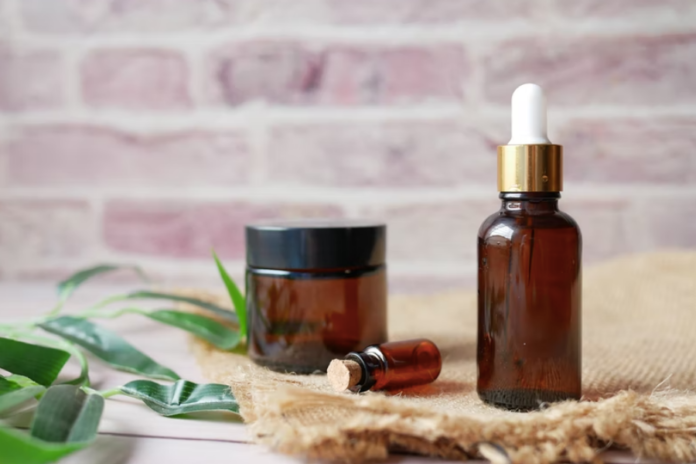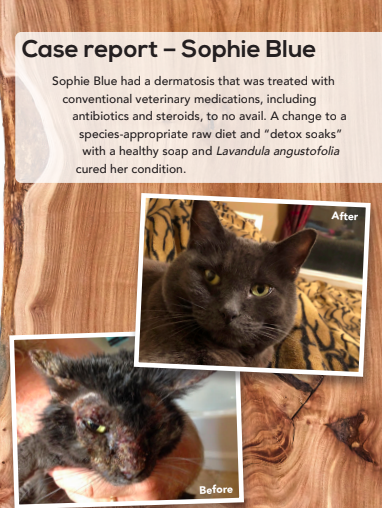Using essential oils with cats

Many people believe essential oils and cats do not mix, and that’s true when it comes to questionable products and incorrect usage. But top-quality essential oils, used properly, can be profoundly healing for our feline friends.
As a cat parent, you have reason to be concerned about using essential oils on and around your kitty. But you shouldn’t fear this modality so much that you choose not to use it at all. When utilized properly, essential oils are an important natural medicine, and can be both safe and effective for felines.
As a holistic veterinarian experienced in the use of essential oils with my own cats and feline patients, I can tell you that the results are successful and without negative incident. However, I am very particular about the brand of essential oils I use, and my methods and frequencies of application.
Memo: Almost anything can be toxic if used improperly.
Science does justify some concern
The main reason people fear using essential oils with cats is because the feline liver does not detoxify the same way human and canine livers do.
 Glucuronidation is the major pathway involved in Phase II liver detoxification metabolism, and accounts for a large portion of drug conjugation and subsequent removal from the body. Essential oils are aromatic compounds, and “…cats, as hypercarnivores, are known to have a low glucuronidation activity, particularly for aromatic (phenolic) compounds.” (EFSA FEEDAP Panel, 2016b).
Glucuronidation is the major pathway involved in Phase II liver detoxification metabolism, and accounts for a large portion of drug conjugation and subsequent removal from the body. Essential oils are aromatic compounds, and “…cats, as hypercarnivores, are known to have a low glucuronidation activity, particularly for aromatic (phenolic) compounds.” (EFSA FEEDAP Panel, 2016b).
Cats do detoxify, just differently
Veterinarians and researchers are familiar with the pathways of detoxification in the livers of dogs and humans, but a 2017 study identified a similar mechanism in the lungs and small intestines of cats.
“A feline CYP2B with a high degree of homology with the canine CYP2B-ortholog was found to be expressed in lung and small intestine but, unlike in…humans and dogs, not in liver. This evidence suggests a minor contribution of the CYP2B subfamily to the overall metabolism of CYP2B substrates such as barbiturates and several anesthetics…” (Okamatsu et al, 2017).
Before you get started
It’s vitally important to use pure, high-quality essential oils with your cat. Never go the cheap route, since many low-end products are adulterated and contain ingredients that can harm your cat. Consult a holistic or integrative veterinarian who is experienced in essential oil use and can direct you to a safe, quality brand.
Administering essential oils
There are three main ways to administer essential oils: topically, orally, or via diffusion.
1. Diffusion: When diffusing essential oils, expose your cat in an intermittent fashion — a couple hours on, several hours off. Always allow the cat to leave the room if she chooses to.
2. Topical: Believe it or not, with the right product and dosage, an essential oil need not be diluted. In fact, dilution with a greasy carrier oil makes it taste delicious and increases licking and ingestion, which may be undesirable depending on the oil being used. If you want your kitty to consume a particular oil, then you can mix it with coconut oil and put it on a paw so she can lick it off.
Memo: If an essential oil gets on a mucous membrane or in an eye, remove it with a fatty carrier/vegetable oil (grapeseed oil, olive oil, etc.). Do not use water.
3. Oral: Ingestion can be accomplished by applying the oil topically with coconut oil, as above, or by mixing the essential oil in a capsule with coconut oil and “pilling”.
 Correct dosing is crucial
Correct dosing is crucial
Essential oils are important aids to detoxification, but can cause symptoms of a too-rapid detox, like a rash or diarrhea. So keep this in mind when choosing a dose — for cats, this usually means one drop or less.
Memo: The rule is: start low, go slow!
Most quality essential oils have dosing guidelines on the bottles, but these are for humans. A 2013 study showed that for many chemicals (and essential oils are natural chemicals), cats should be dosed at much lower levels due to their smaller size and different detoxification pathways; in fact, a “four-fold less default uncertainty factor” has been suggested.
 So how is it possible to use less than one drop? Apply one drop of the oil to your finger and shake it off. What’s left is less than one drop. You can also dilute one drop of oil in soapy water (for topical use) or in a carrier oil/fatty lipid, and then use less than the total amount.
So how is it possible to use less than one drop? Apply one drop of the oil to your finger and shake it off. What’s left is less than one drop. You can also dilute one drop of oil in soapy water (for topical use) or in a carrier oil/fatty lipid, and then use less than the total amount.
Moving forward without fear
These are just a few basic guidelines, but they should help you feel more confident about using essential oils in your kitty household. Again, be sure to consult with a veterinarian with knowledge and experience in essential oils. Utilizing the correct oils properly can not only be safe for cats, but also a useful modality for great health!




